Reviews
Adam Simon
USA, 1990
Credits
Review by Jonathan Foltz
Posted on 05 October 2010
Source DivX
Categories 31 Days of Horror VII
Madness, like other maladies, tends to be infectious. Witness Sigmund Freud, in his study of the infamous Mr. Schreber—the German Judge who thought that God was sending rays of light to enact “miracles” on his body. Freud found Schreber’s paranoid memoirs so compelling, and so surprisingly close to his own thought, that he urged his colleagues that “psychiatrists should take a lesson from this patient,” later writing to Jung that “The wonderful Schreber… ought to have been made a professor of psychiatry and director of a mental hospital.”1 The almost lyrical appeal of Schreber’s twisted logic, and the strange intimacy that comes with analysis, lured Freud too close to his subject, as he confides in another letter: “I am Schreber, nothing but Schreber.”2 I suppose that if it can happen to Freud it can happen to anyone. The habitual life we actually experience is so rationalized and inglorious that the notion leaving it behind, or of convulsively losing it, has an unyielding fascination. This must be why the extravagant dementia of the best horror films can often seem so unaccountably giddy. Adam Simon’s 1990 surrealist head-scratcher, Brain Dead, is no exception, although by any account it fits only uncomfortably within the horror genre. A not-quite psychological thriller, and a not-quite sci-fi allegory, Brain Dead is suitably schizophrenic in its tone, offering a delirious low-budget cross between Jacob’s Ladder, Shock Corridor, Lost Highway and The Man With Two Brains. Watching the film, it is often impossible to follow its shifts in style, moving without warning from slapstick humor to jealous, violent dread. This tonal imbalance may be a symptom of its budget or of its production, but at the film’s best moments it can also seem like an invitation to the viewer, luring us into a distorted world from which we might not be able to escape.
For such a film, summary proves predictably difficult. Brain Dead stars Bill Pullman as Dr Rex Martin, a neuroscientist studying the nerve centers of the human brain, and more importantly ways to manipulate them with electric currents. His school friend Jim (played by Bill Paxton)3 works for the soulless Eunice Corporation, who want Dr. Martin to try and retrieve a bit of information from an ex-employee named Halsey. Halsey, a superbly skittish Bud Cort, had been working on “something big: cornerstone technology,” according to Jim, but went nuts, murdering his wife and children, and taking a significant string of numbers, which are stored only in his now paranoid brain, into the Lakeside asylum. Dr Martin is engaged to extract said information in a dangerous procedure that could also leave the patient… Brain Dead! This, however, is just as well for Eunice, who would rather see the information disappear for good if they can’t retrieve it. As Jim exclaims later in the film, “We need those numbers!”, but they are equally content to let Halsey die. Meanwhile Dr. Martin begins to suspect that his wife is having an affair with Jim, but his murderous fantasies may also indicate that in “extracting” Halsey’s paranoia (in a procedure that looks about as complicated as a game of Operation), Martin may simply have brought it to life. Now a blood-covered imp named “Conklin,” who had previously haunted Halsey and potentially “tricked” him to murder his family, stalks Dr. Martin, leading us to believe that he now shares his patient’s delusions, or that he might be Halsey himself, or that he might be dreaming that he’s Halsey after being hit by a car (a car owned by the Conklin Mattress Company), etc.
Once the labyrinthine plot takes its initial turn, Brain Dead offers little consolation that it all makes sense, moving at a disorienting pace through realities and alternate realities. In fact there are so many scenes where Dr. Martin wakes up as from a dream that reality starts to lose its meaning, even for the viewer. This slippery, mise en abyme structure owes a debt to the script by Charles Beaumont, the legendary Twilight Zone writer whose life was cut short by disease. Indeed, Brain Dead’s contorted but campy brilliance feels like a faithful adaptation of the classic Twilight Zone aesthetic, but updated to be at once gorier and goofier. The opening scene shows Dr. Martin’s assistant smiling gleefully as he wields what looks like a soldering iron above an exposed brain, connected by wires to a stretched, boneless face whose muscles the brain apparently controls. As the assistant shocks the brain in different areas, the eyes on the face turn to the left, then to the right, and finally go cross-eyed as the assistant titters to himself. Actually, this image of a grotesque, surgically removed face gone cross-eyed is a wonderful metaphor for a film whose cringe-worthy visuals are mitigated by a pervasive and singular humor. Ridiculous lines of dialogue from the film are instantly quotable. In a bedroom scene between a jealous Dr. Martin and his wife, they discuss the case of Halsey:
DR. MARTIN
They said he went nuts, he killed his wife, two kids and three researcher assistants.DANA MARTIN
Genius maybe, but definitely not a very nice guy.DR. MARTIN
No, quite to the contrary, he’s a very sweet man. I met him today. He likes me.DANA MARTIN
I’m so glad you’re making new friends!
More odd moments stand out as well. From the vagrant, apparently suffering from Tourette Syndrome, who sees Dr. Martin carrying a jarred brain across the parking lot and begins screaming (“That’s my brain! That’s my fucking brain!”), to Dr. Martin’s deranged social interaction over dinner (“I don’t know if anyone’s ever told you about me, but I’m a purple people… a person pimple… a people person, there we go”), Brain Dead is filled with an abrupt and unanticipated absurdity that can also seem symptomatic of a deeper malaise.
Part of this malaise is conjured by the very physical vulnerability of the brain, and the precarious exposure of both identity and experience to manipulation. “All that we suffer or enjoy comes from the brain and its condition,” as Dr. Martin quotes at one point from Hippocrates “whether hot, cold, moist, dry… madness, in particular, stems from its moistness.” Any change in the condition of the brain is also a change in what we feel. While Dr. Martin insists that “every brain is the living record of life,” the film is equally obsessed with experimental technology capable of altering that life, possibly destroying it. This technology, however, no longer feels state of the art (if it ever did), but clunky and laughably artificial. Scanning Halsey’s brain, a computer beeps three times, before isolating the image of what looks like a tiny knot in the brain tissue and flashing “PARANOIA” on the screen, as if diagnosing mental illness were as automatic passing through the checkout line at the supermarket. The movie is also self-conscious of the extent to which film might double as a similar kind of technology. In an early scene, we find Dr. Martin conversing congenially with one of his test-brains. “Good morning Mr. Offencamp! How is every little floating thing? [Silence] Oh yeah? You don’t say? Feeling a little suspicious… persecuted? Like someone is studying you, observing you? Right… Well that’s correct! Just remember, Al, that just because you’re paranoid doesn’t mean that they aren’t out to get you!” The film then cuts ominously to a large building with a figure looking down, a figure who turns out to be Dr. Martin hours later—a nice bit of editing that suggests how the camera participates in the film’s paranoid logic. In fact, as Brain Dead slips farther into its narrative confusion, we are increasingly made aware of how cuts between scenes could represent either a simple temporal progression or Dr. Martin’s own mental lapse. In shifting reality to fit its purpose, films are also vehicles of delusional consciousness.
But such delusion is often uncannily beautiful as well. Although Brain Dead is not really cinematically sophisticated, it does manage some memorable and wonderfully surreal images. In one scene, Halsey - with his brain exposed and supported with metal bars - is interrogated by a pair of prim old ladies in a lush Victorian interior. In another, Dr. Martin rips open his own head to reveal a kaleidoscope of butterflies, an image that refers back to Zhuangzi’s famous parable about the ontology of dreaming. In moments like these, Brain Dead transcends its conventional foundations, and aspires, however awkwardly, to the condition of art. Most films would chicken out, and offer a clear, literal narrative explanation for its phantasmagoric logic. Instead, Brain Dead lingers within the insanity it depicts, celebrating the novelty of a deliriously transfigured world. As Dr. Martin proclaims, “A toast: to madness!”
- Sigmund Freud, “Psychoanalytic Notes Upon an Autobiographical Account of a Case of Paranoia (Dementia Paranoides)” in Three Case Histories, p. 119; and Sigmund Freud, letter to C. G. Jung, 22 April 1910, The Freud/Jung Letters: The Correspondence Between Sigmund Freud and C. G. Jung (Princeton, NJ: 1974), 311. ↩
- That’s right, this movie stars both of the “Bills”: see for example this Facebook fan page or this page at bobborst.com ↩
- This sense of physical and emotional contingency may reflect Charles Beaumont’s thoughts on his own illness, a combination of early onset Alzheimer’s and other symptoms. ↩
More 31 Days of Horror VII
-

The Thin Blue Line
1988 -

The Ninth Configuration
1980 -
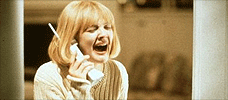
Scream
1996 -
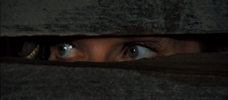
Dying Room Only
1973 -
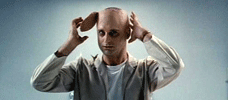
Brain Dead
1990 -
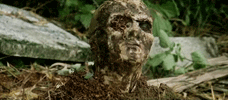
Zombi 2
1979 -
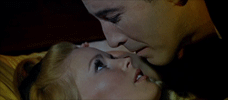
Dracula Has Risen from the Grave
1968 -

The Storyteller
1988-1989 -
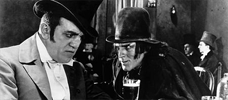
Dr. Jekyll and Mr. Hyde
1920 -
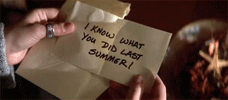
I Know What You Did Last Summer
1997 -
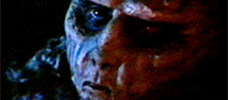
Don’t Be Afraid of the Dark
1973 -

Dark Age
1987 -
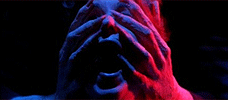
Inferno
1980 -
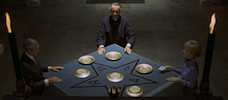
To the Devil a Daughter
UK / West Germany -
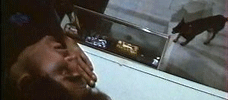
Trapped
1973 -
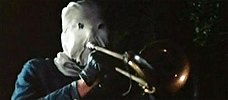
The Town that Dreaded Sundown
1976 -
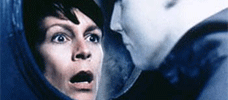
Halloween H20: Twenty Years Later
1998 -

Killdozer
1973 -
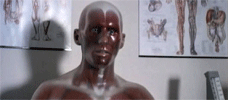
Pin
1989 -
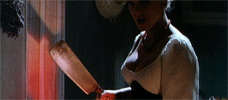
Frankenstein Created Woman
1967 -
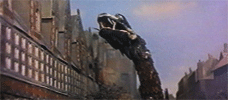
Reptilicus
1961 -
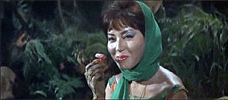
Matango
1963 -
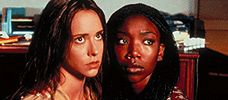
I Still Know What You Did Last Summer
1998 -
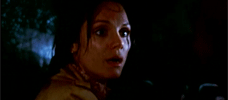
Night Terror
1977 -
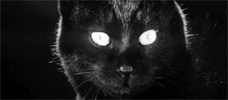
Kuroneko
1968 -

Demons
1985 -
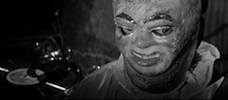
Paranoiac
1963 -
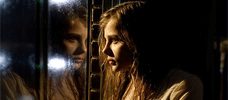
Let Me In
2010 -
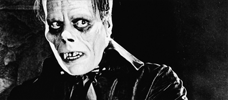
The Phantom of the Opera
1925
We don’t do comments anymore, but you may contact us here or find us on Twitter or Facebook.



